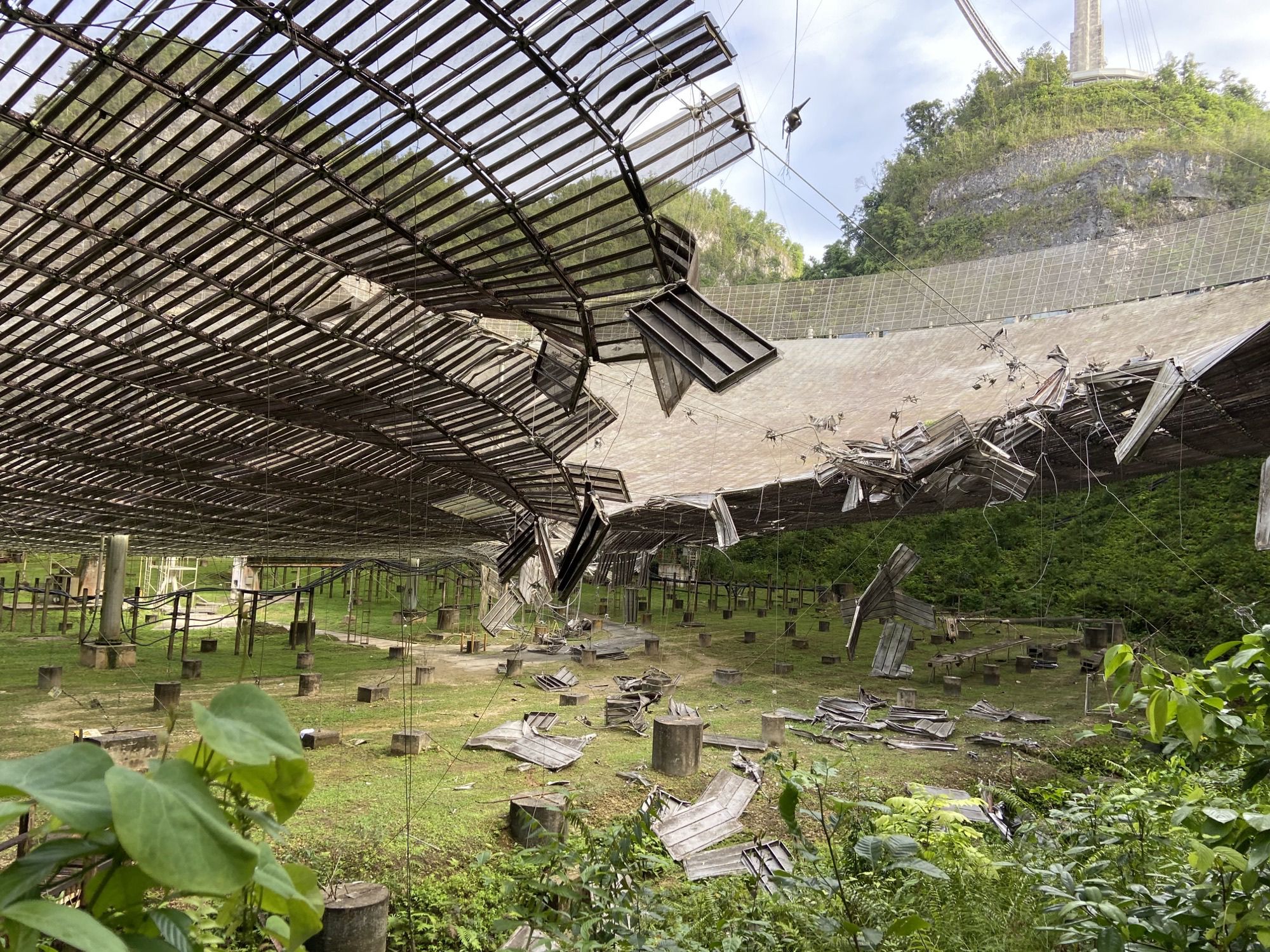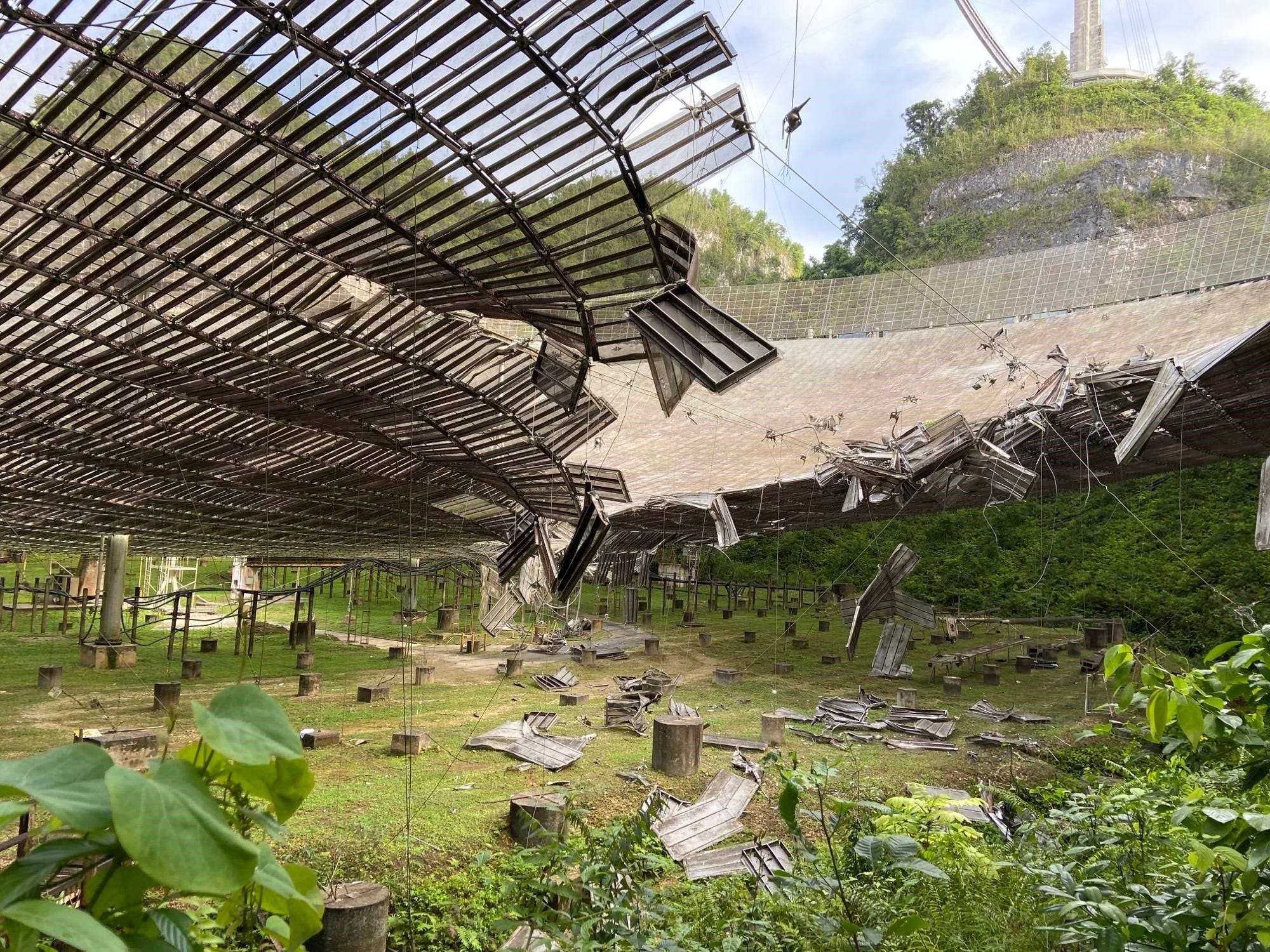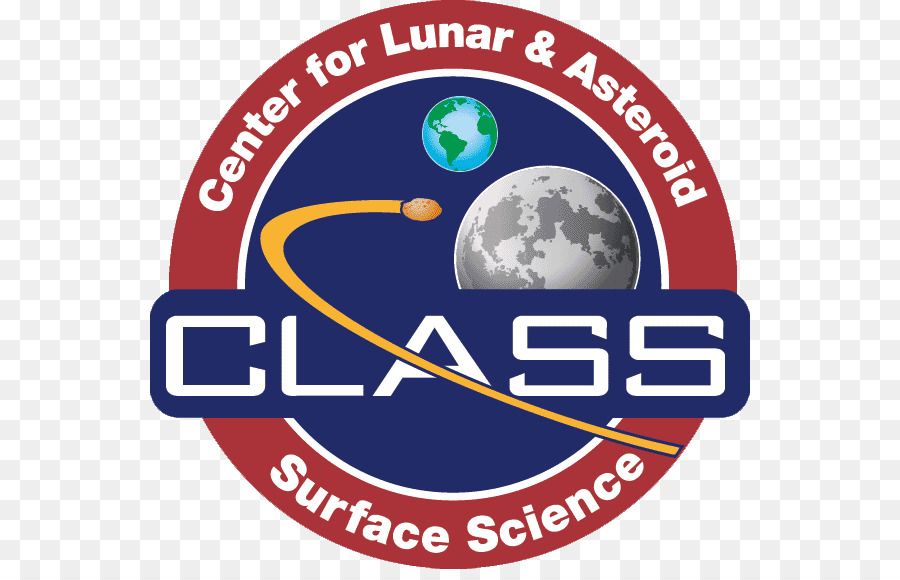Telescope Used to Look for Alien Life Has Completely Collapsed
December 1, 2020 (fox2now.com)
• Last month, the US National Science Foundation (NSF) announced that the Arecibo Observatory in Puerto Rico would be permanently closed. An auxiliary cable snapped in August causing a 100-foot gash on the 1,000-foot-wide dish (pictured above), damaging the receiver platform that hung above it. Then a main cable broke in mid-November.
• The huge radio telescope that played a key role in astronomical discoveries for more than half a century (and was used by SETI – the ‘Search for Extraterrestrial Intelligence’ as seen in the 1997 movie “Contact”) completely collapsed on December 1st. The telescope’s 900-ton receiver platform fell onto the reflector dish more than 400 feet below. (see 1:38 minute video below) It had endured hurricanes, tropical humidity and a recent string of earthquakes in its 57 years of operation.
• “It sounded like a rumble. I knew exactly what it was,” said Jonathan Friedman, who worked for 26 years as a senior research associate at the observatory. “I was screaming. Personally, I was out of control…. I don’t have words to express it. It’s a very deep, terrible feeling.” When Friedman reached the dish, a cloud of dust hung in the air where the structure once stood, dashing hopes held by some scientists that the telescope could somehow be repaired.
• Scientists worldwide had petitioned US officials to reverse the NSF’s decision to close the observatory. The NSF said at the time that it intended to eventually reopen the visitor center and restore operations at the observatory’s remaining assets, including its two LIDAR facilities used for upper atmospheric and ionospheric research, analyzing cloud cover and precipitation data.
• “I am one of those students who visited it when young and got inspired,” said Abel Méndez, a physics and astrobiology professor at the University of Puerto Rico at Arecibo. “The world without the observatory loses, but Puerto Rico loses even more.” Méndez last used the telescope on August 6th, just days before a socket holding the auxiliary cable snapped in what experts believe could be a manufacturing error.
• About 250 scientists worldwide had been using the observatory when it closed in August, including Méndez, who was studying stars to detect habitable planets. The NSF, which owns the observatory (managed by the University of Central Florida), said crews who evaluated the structure after the first incident determined that the remaining cables could handle the additional weight. But on November 6th, another cable broke.
MYSTERY WIRE (SAN JUAN, Puerto Rico) — A huge, already damaged radio telescope in Puerto Rico that has played a key role in astronomical discoveries for more than half a century completely collapsed on Tuesday.

The telescope’s 900-ton receiver platform fell onto the reflector dish more than 400 feet below.
The U.S. National Science Foundation had earlier announced that the Arecibo Observatory would be closed.

An auxiliary cable snapped in August, causing a 100-foot gash on the 1,000-foot-wide (305-meter-wide) dish and damaged the receiver platform that hung above it. Then a main cable broke in early November.
The collapse stunned many scientists who had relied on what was until recently the largest radio telescope in the world.
“It sounded like a rumble. I knew exactly what it was,” said Jonathan Friedman, who worked for 26 years as a senior research associate at the observatory and still lives near it. “I was screaming. Personally, I was out of control…. I don’t have words to express it. It’s a very deep, terrible feeling.”
Friedman ran up a small hill near his home and confirmed his suspicions: A cloud of dust hung in the air where the structure once stood, demolishing hopes held by some scientists that the telescope could somehow be repaired.
“It’s a huge loss,” said Carmen Pantoja, an astronomer and professor at the University of Puerto Rico who used the telescope for her doctorate. “It was a chapter of my life.”
1:38 minute video of the Aricibo collapse on December 1st (‘ABC News’ YouTube)
FAIR USE NOTICE: This page contains copyrighted material the use of which has not been specifically authorized by the copyright owner. ExoNews.org distributes this material for the purpose of news reporting, educational research, comment and criticism, constituting Fair Use under 17 U.S.C § 107. Please contact the Editor at ExoNews with any copyright issue.








